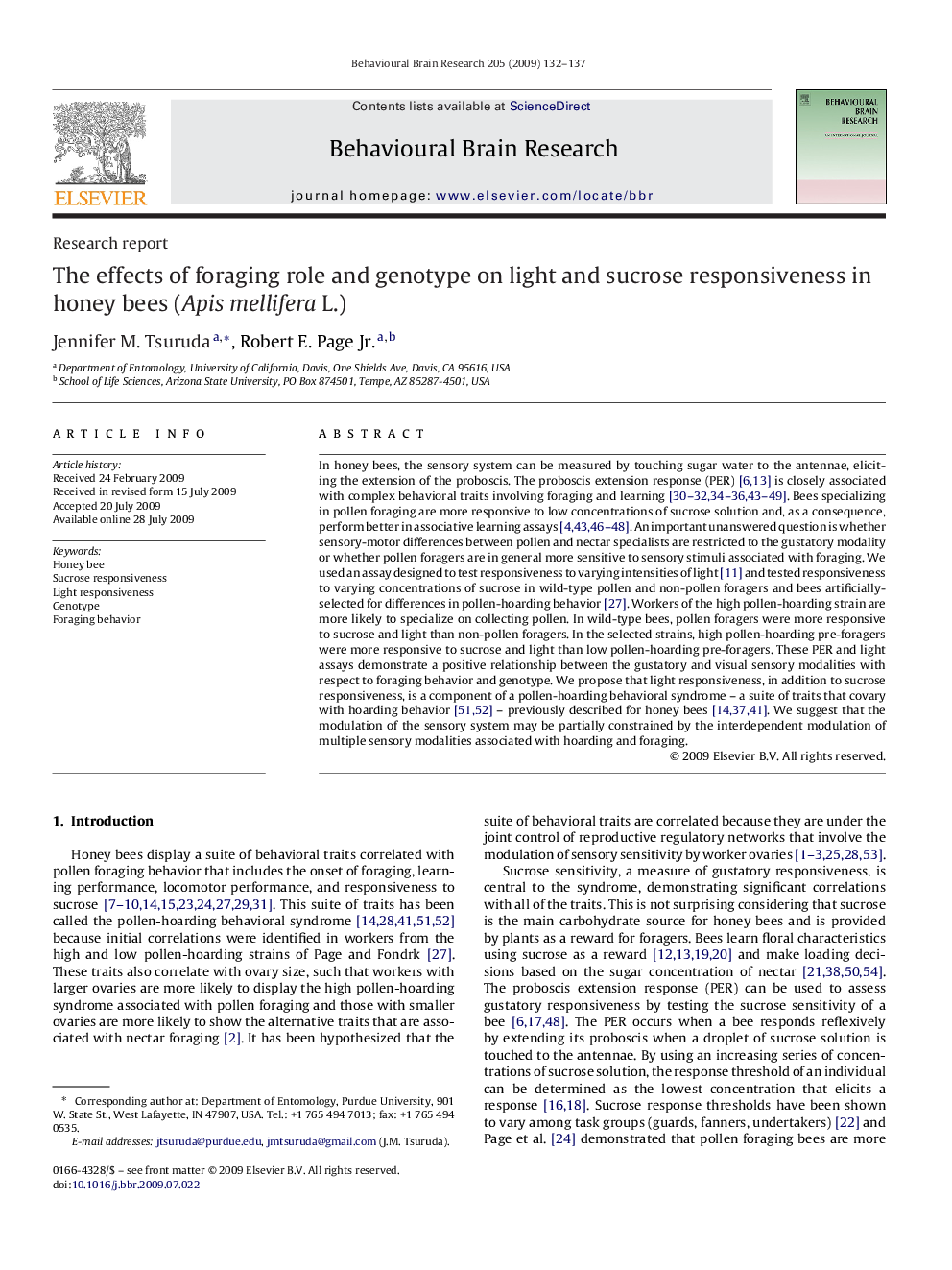| Article ID | Journal | Published Year | Pages | File Type |
|---|---|---|---|---|
| 4314518 | Behavioural Brain Research | 2009 | 6 Pages |
In honey bees, the sensory system can be measured by touching sugar water to the antennae, eliciting the extension of the proboscis. The proboscis extension response (PER) [6] and [13] is closely associated with complex behavioral traits involving foraging and learning [30], [31], [32], [34], [35], [36], [43], [44], [45], [46], [47], [48] and [49]. Bees specializing in pollen foraging are more responsive to low concentrations of sucrose solution and, as a consequence, perform better in associative learning assays [4], [43], [46], [47] and [48]. An important unanswered question is whether sensory-motor differences between pollen and nectar specialists are restricted to the gustatory modality or whether pollen foragers are in general more sensitive to sensory stimuli associated with foraging. We used an assay designed to test responsiveness to varying intensities of light [11] and tested responsiveness to varying concentrations of sucrose in wild-type pollen and non-pollen foragers and bees artificially-selected for differences in pollen-hoarding behavior [27]. Workers of the high pollen-hoarding strain are more likely to specialize on collecting pollen. In wild-type bees, pollen foragers were more responsive to sucrose and light than non-pollen foragers. In the selected strains, high pollen-hoarding pre-foragers were more responsive to sucrose and light than low pollen-hoarding pre-foragers. These PER and light assays demonstrate a positive relationship between the gustatory and visual sensory modalities with respect to foraging behavior and genotype. We propose that light responsiveness, in addition to sucrose responsiveness, is a component of a pollen-hoarding behavioral syndrome – a suite of traits that covary with hoarding behavior [51] and [52] – previously described for honey bees [14], [37] and [41]. We suggest that the modulation of the sensory system may be partially constrained by the interdependent modulation of multiple sensory modalities associated with hoarding and foraging.
